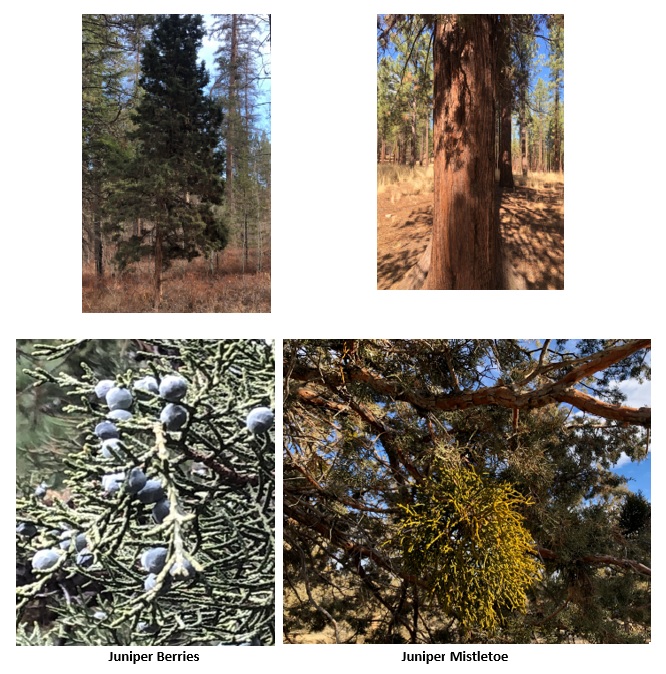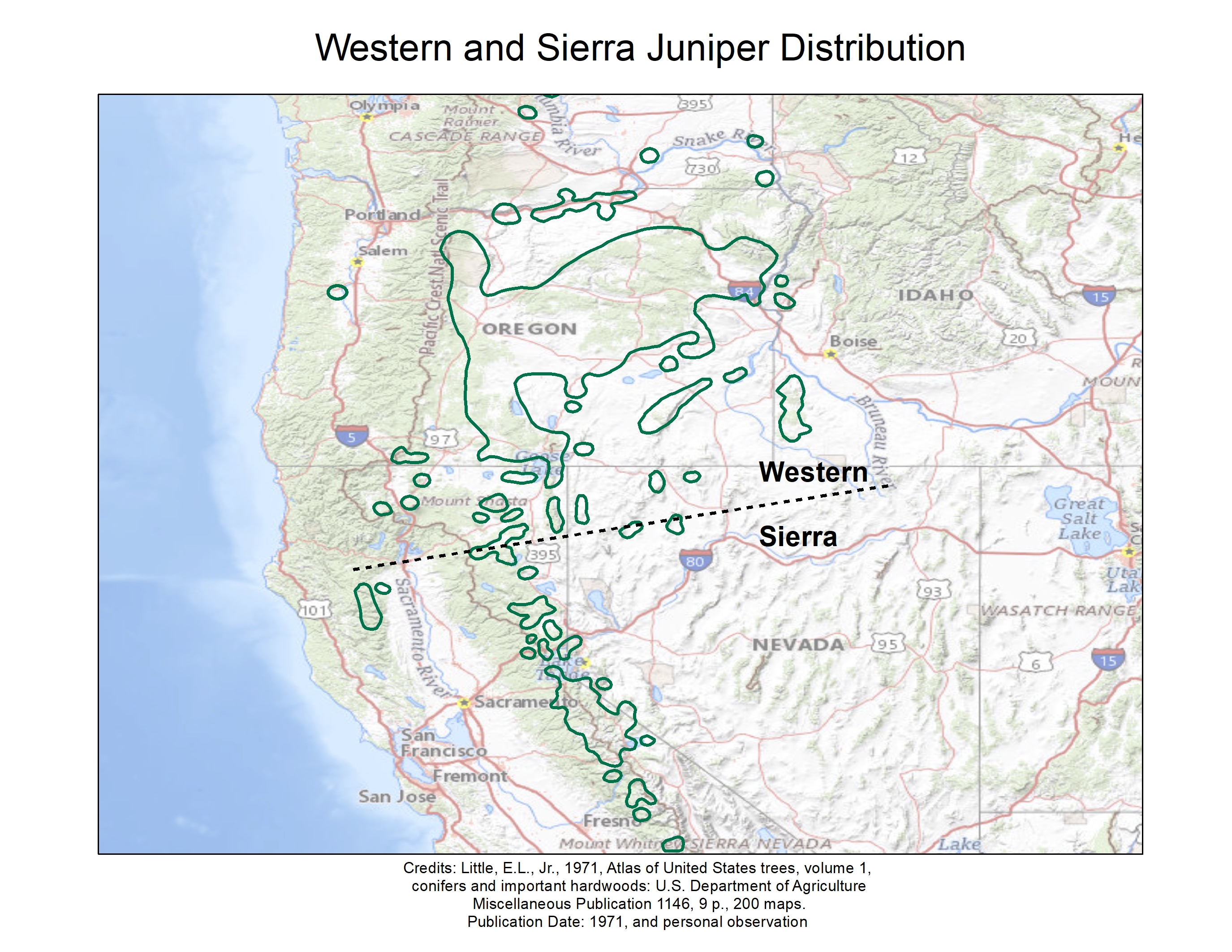Description:
The western juniper is a common tree in much of eastern Oregon with smaller populations in nearby California, Nevada and Idaho. It, along with the others in the juniper genus, are often the only tree in the drier parts of the High Desert. On its upper reaches it will be found many times with ponderosa pine, and occasionally with other mid-altitude conifers.
The tree can achieve a height of 80 feet, but it is much more common to see them as small trees (sometimes even bush-like) maybe 20 to 40 feet tall. It often has a very asymmetrical form, very much a character of the wild west.
The needles are very small, usually only 1/100 of an inch long. The cones are even more unusual – they take the form of a “berry”, the size and color of our delicious fruit, the blueberry. The bark is dark brown and fibrous.
Personal Observations:
This tree is ubiquitous in the High Desert. It is very common for me to see it as I climb to higher mountainous elevations on my way to its higher up cousin conifers. It is very common in my neighborhood, which is in a western part of Bend, Oregon. It starts out very common on the east part of town, then mixes with ponderosa pine near me, then becomes more and more rare as I proceed up the Cascades. Yet, I still see them mixed in with the mid-elevation trees such as lodgepole pine and grand fir, although they may tend to be in the rocky spots in that range.
I have also seen them in Shevlin Park near Bend, Oregon. Here, because of the cooler, wetter landscape, they are seen not only with ponderosa and lodgepole pines, but with grand fir, Engelmann spruce, western larch, and Douglas-fir.
Another great place to see them in all their glory is a short way east of Bend in the Badlands Wilderness Area, which is managed by the Bureau of Land Management. The junipers adorn miles and miles of basaltic lava formations. There is even a trail called the “Trail of Ancient Junipers”. Some of these specimens may be over 1000 years old! The Badlands can also offer a relatively snow free outdoor experience for those of you who want a winter adventure.
I am including the Sierra juniper on the map above. This tree does extend into the Great Basin near Lake Tahoe, but I don’t discuss it because of its absence from most of my area of interest.


